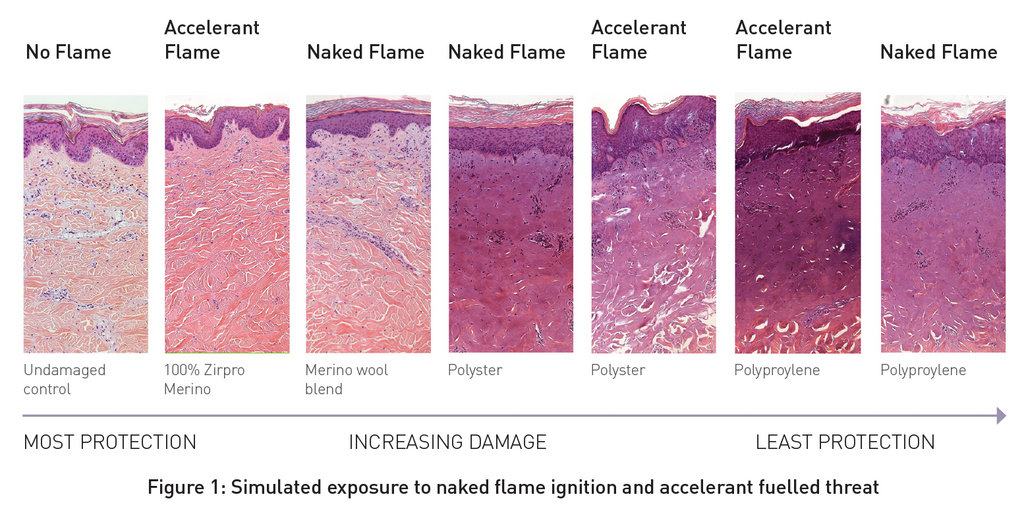Are you finding it difficult to choose which is the best fibre to choose when it comes to your bedding and clothing?
At MiniJumbuk we believe that wool is the best fibre when it comes to keeping your family safe and comfortable. Wool is ideal for both hot and cold sleepers. Wool is a natural insulator to keep you warm in winter and naturally breathes to keep you cool in summer. Wool fibre helps to keep your body at the optimal temperature, therefore, promoting healthy sleep whether you are a hot or a cold sleeper. Other fibres do not breathe as well as wool and can trap heat in your bed. Below is a scientific study showing why wool is the best and safest choice when it comes to fibres compared to synthetic fibres.
Wool vs Synthetic fibres:
A scientific study into the fire resistance of various fabrics used as base-layer garments for military and first responder personnel found that 100% synthetic fabrics such as polypropylene and polyester performed the worst due to their propensity to melt and damage the skin. During this study, they used pig skin as a simulant because the skin is the most appropriate experimental model for all dermatological and surgical wound investigations.

How wool is fire resistant compared to other fibres:
Wool textiles have the highest natural fibre resistance compared to other common textiles, such as cotton and polyester. Not only is wool great for bedding but it is a great fibre to use when it comes to clothing.
Wool is known to have the highest natural fire resistance; the temperature of the natural flame must reach a high of 570-600°C before the wool will ignite. Compared to other untreated textiles such as cotton which is flammable at just 255°C. In conclusion, wool requires heat to be generated equivalent to twice the maximum temperature of a kitchen oven before the fibre will combust, as where cotton can easily ignite with the temperature of your standard oven.
How is wool self-extinguishing:
If wool does ignite, it will self-extinguish the source of the heat or the flame is removed. This is because the wool fibre contains naturally high levels of nitrogen – an element commonly used as a fire retardant – and when it is heated sufficiently to combust, it tends to produce a charring layer which can prevent further spread of the flame.
Wool doesn't melt:
Wool does not melt or drip which means it cannot stick to the skin. In contrast, common synthetics such as nylon melt at the very low temperature of 160-260°C and polyester melts at 252-292°C, with the material then sticking to the skin.
The table below summaries the key measures of flammability for untreated textile fibres:

Source: https://www.woolmark.com/



